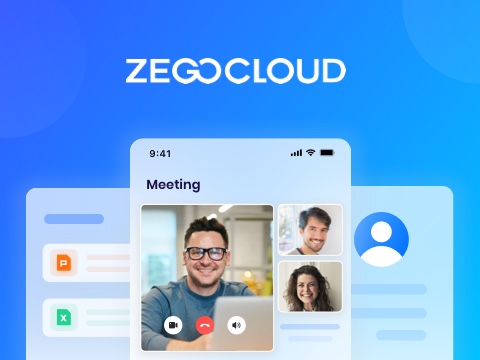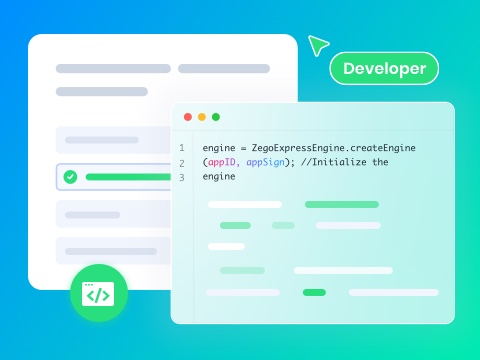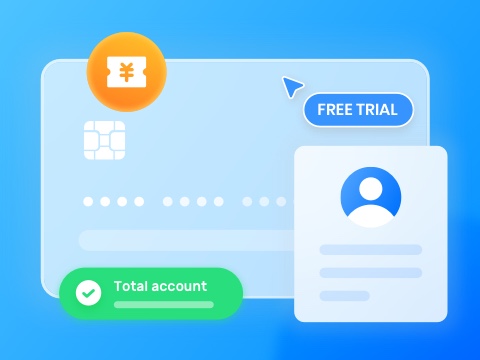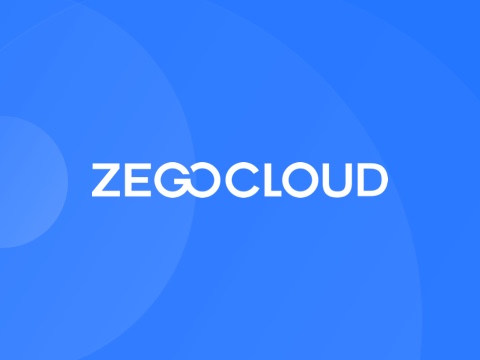With innovations in AI and cybersecurity, cloud computing has reformed the way businesses manage data. Nowadays, organizations across various niches are relying on cloud solutions to reduce costs and improve efficiency. However, staying ahead of the current trends is essential to grow in a competitive environment. Thus, this article provides a deep understanding of the future of cloud computing, which you must read to leverage its full potential.
What is Cloud Computing?
In simple words, cloud computing refers to the on-demand delivery of IT resources or computing services via the Internet. Such computing services trends are data storage, networking capabilities, physical or virtual servers, software, application development tools, and AI-powered analytical platforms. Moreover, cloud computing uses the internet to connect users with cloud platforms, where they request access to rented computing services.
Instead of buying and maintaining physical data centers and servers, individuals can access this technology on an as-needed basis. Notably, cloud doesn’t refer to something floating in the sky, but it refers to remote servers or powerful mainframe computers housed elsewhere in data centers. Besides, a central server handles all the clients and server communication to facilitate smooth and secure data exchange.
Benefits of Cloud Computing
The rapidly growing cloud computing trends signal that it is offering countless benefits to organizations of every type and size. Unlike on-premises IT, where the company owns physical data centers, cloud computing has many advantages; some are listed below:
- Cost-Effectiveness: Instead of buying, installing, managing, and configuring expensive infrastructure, businesses are using cloud computing that significantly reduces their expenditures. It works on a pay-as-you-go model where companies only pay for what computing resources they use.
- Security & Privacy: Besides, cloud computing services of today are striving towards the safety and security of customer data. Thus, these data centers benefit companies with their depth and breadth of security mechanisms and top security team experts.
- Flexibility & Speed: Through these cloud technologies, companies can use enterprise applications in minutes rather than waiting for weeks for IT response. Additionally, the trends in cloud computing allow them to set up their virtual office anywhere since they can access data over the internet.
- Enhanced Strategic Value: As cloud providers offer services to enterprises at lower cost, they get free to invest in other up-to-date innovations to gain a competitive edge. For instance, banking industries deploy virtual agents over the cloud to deliver top-notch customer services.
- Scalability: Lastly, the cloud allows organizations to increase users from thousands to millions in a shorter period. Instead of purchasing a system that stays unused most of the time, it lets you increase the capacity as per the project’s needs.
Top 10 Future Trends and Predictions of Cloud Computing
Globally, cloud computing is a growing industry that was valued at $546 billion in 2022 and is expected to reach $5150.92 billion by 2034. Now, if this sparks your interest, read the following section and learn about cloud computing industry trends in the future.
Trend 1. Rise of AI and ML
Technologies that are close to cloud computing and most trending are Artificial Intelligence and Machine Learning. With advancements in ML and AI, you can expect self-automation, where computers will complete tasks automatically. Moreover, you will witness personalized cloud experiences, self-learning, and improved data security or privacy. For this purpose, Amazon, IBM, and Google are already investing a lot, which is evident through Google Lens and Amazon’s AWS DeepLens innovation.
Besides, predictive analysis, automated resource management, and enhanced security are the future implications of AI in cloud computing services. According to a report, 93% of AI deployments use cloud-based capabilities, showing the growth of AI technologies in the cloud future of computing.
Trend 2. IoT (Internet of Things)
Basically, IoT is a cloud-enabling platform that is used for the development and deployment of applications. It uses sensors to generate massive data that gets storage on cloud servers. Furthermore, it uses sensors and actuators and performs analysis of the gathered data to extract results for business decisions. This technology even involves connectivity among servers, computers, and networks while remotely communicating with devices.
Since IoT collects data from devices and various sensors, it acts as an intermediate between smart devices and remote systems. Thus, smart connectivity plays a vital role in making IoT a trend in cloud computing. Additionally, IoT devices that are reporting data to a centralized location for processing are getting enhanced and replaced by edge computing.
Trend 3. Expansion of Edge Computing
In the future of cloud computing in software, edge computing will bring computation closer to the source of data generation. It will deploy 5G networks that will enable low-latency communication. Moreover, this approach will bring data processing closer to devices and users, leading to improved application performance and faster insights. By reducing data travel, you can decrease bandwidth use and lower delay, which will enhance user experiences.
Trend 4. Growth of Serverless Computing
Serverless cloud computing is the hottest trend of 2025 since it removes the need for developers to handle server infrastructure. Through this model, cloud providers are now handling server scaling, provisioning, and maintenance tasks.
Hence, this way, developers are solely focusing on writing and deploying codes, which significantly saves their time. Serverless computing will let businesses innovate quickly with lower development costs and without managing the underlying infrastructure.
Trend 5. Multi and Hybrid-Cloud Environments
The adoption of multi and hybrid cloud environments will be an upcoming cloud technology trend as organizations are realizing its importance gradually. Notably, it helps them divide their workload among multiple cloud providers to control their resources and utilize each cloud server’s strength.
In addition, multi-cloud reduces threats and facilitates cost-effectiveness. Using multi-cloud, you get the flexibility to choose a particular service from a certain cloud service provider.
Trend 6. Integration of Blockchain Technology
Among cloud computing industry trends, blockchain is making its way to cloud computing by enabling new services and applications. Generally, it works as a distributed ledger, meaning it records transactions across systems, which makes it secure. Furthermore, cloud providers are offering Blockchain-as-a-Service (BaaS) solutions that let you create and deploy blockchain apps.
BaaS solutions also simplify the development of blockchain applications without letting you handle the underlying infrastructure. Hence, integrating it with cloud services will enhance transparency and improve security in various sectors.
Trend 7. Industry-Specific Cloud Solutions
Since businesses are demanding tailored solutions, vertical-specific cloud offerings are gaining popularity. For instance, healthcare clouds comply with HIPAA and provide advanced analytics regarding patient data. Similarly, retail clouds enable real-time inventory management to facilitate personalized shopping experiences. This trend in cloud computing will offer more configured solutions for every niche by 2030 while integrating AI and ML technologies.
You may also like: 10 Best HIPAA-Compliant Telehealth Platforms
Trend 8. Improvements in Cloud Data Security
No business can go successfully by compromising data security; thus, everyone strives to overcome data deletion, leaks, and unauthorized amendments. In this context, the zero-trust security model is gaining traction since it requires verification for every user, device and application before granting access. Besides, AI and ML are preferred for security measures that alert security teams about possible breaches.
Trend 9. Evolution of Cloud Cost Management Tools
As the number of cloud computing users grows, cost management becomes a concern. That’s where cloud providers develop innovative cost management tools and strive to optimize expenditure. This cloud computing trend will set financial limits, keep track of cloud expenditures, and provide advice on the right size of resources needed.
Trend 10. Focus on Cloud Native Development
Conclusively, another major trend is cloud-native development, which focuses on building and running applications designed for the cloud environment. It uses modern technologies, including containers, microservices, and dynamic orchestration, that automate the management and coordination of services. Especially adopting cloud-native practices will allow the development of applications that are flexible and scalable.
What is the Future of Cloud Computing from 2025 to 2030?
While organizations are realizing the importance of cloud computing, its adoption trends are increasing. However, entrepreneurs are still worried about the future of cloud computing in the upcoming era. Apparently, it seems promising to many, yet the following are some predictions experts made on cloud computing:
- AI Integration: AI is the future, and cloud services are trying to integrate AI capabilities for security and efficiency reasons. Besides, by integrating AI and ML, cloud providers will automate processes and ensure self-maintenance over time.
- Adoption of Edge Computing: The future of cloud computing in software will revolve around edge computing because it improves data processing power. Plus, organizations will leverage it when the requirements for real-time data analytics will increase.
- Elevated Security Measures: Many critics claim that the rise of cloud computing is increasing cybersecurity attacks. Thus, to address this concern, cloud providers will use AI and ML to strengthen security measures like access control, encryption, and threat detection.
- Growth of Multi-cloud: There will be a massive increase in the use of hybrid and multi-cloud environments to optimize cost and avoid vendor check-ins. In the coming years, organizations will adopt hybrid cloud environments to use private and public clouds and enhance business security.
- Personalized Cloud Solutions for Industries: Soon, cloud providers will develop specialized solutions for industries like health, finance, and education. For example, ZEGOCLOUD, which uses cloud computing, will allow businesses to handle large user bases without performance issues.
How ZEGOCLOUD Transforms Real-Time Interaction in Cloud Computing
In cloud computing trends, ZEGOCLOUD is revolutionizing real-time interaction by enabling seamless communication solutions for developers and businesses. Through AI advancements, cloud infrastructure, and edge computing, it enhances real-time engagement across industries via communication APIs and SDKs. ZEGOCLOUD in-app chat SDK is specially designed to foster high-quality interaction among businesses.
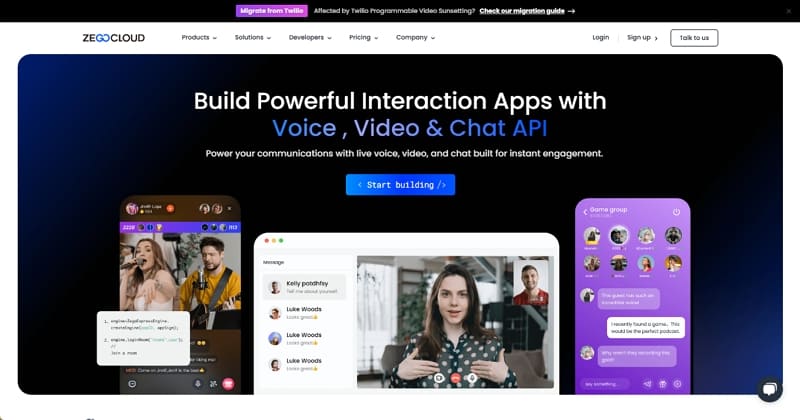
Developers can embed this feature in their existing or new web apps without writing code from scratch. Despite chat, there are video and audio calling SDKs to boost interactivity with ultra-low latency of 200ms and minimal delay.
Also, ZEGOCLOUD conversational AI leverages AI to enhance communication experiences by suppressing noise and changing background while video calling. Additionally, its security measures and global infrastructure enable greater scalability options for expanding businesses and their growing needs.
Conclusion
In summary, this article has explored the future of cloud computing with its current trends and predictions. Furthermore, we explained the basics of cloud computing and its benefits, which are forcing businesses to adopt it.
Finally, it can be said that ZEGOCLOUD will transform cloud computing dynamics by providing communication APIs and SDKs to businesses. Through them, interactivity in web apps can be uplifted, which is indeed the need of every era.
Read more:
FAQ
Q1: Does cloud computing have a future?
Yes, cloud computing will continue to grow as businesses and individuals rely on scalable and cost-effective solutions. AI, edge computing, and hybrid cloud adoption will drive its future.
Q2: What is the future of cloud computing in 2030?
By 2030, cloud computing will be more AI-driven, highly automated, and integrated with quantum computing and IoT. Edge computing will reduce latency, and sustainable cloud solutions will be widely adopted.
Q3: What are the future trends of cloud computing?
Key trends include AI-powered automation, edge computing for faster processing, hybrid and multi-cloud adoption for flexibility, serverless computing for ease of development, and greener cloud infrastructure for sustainability.
Q4: What is the future of cloud computing in 2025?
By 2025, AI-driven cloud automation, stronger security, and widespread edge computing adoption will shape the industry. Hybrid and multi-cloud strategies will dominate, powered by 5G and IoT advancements.
Let’s Build APP Together
Start building with real-time video, voice & chat SDK for apps today!



